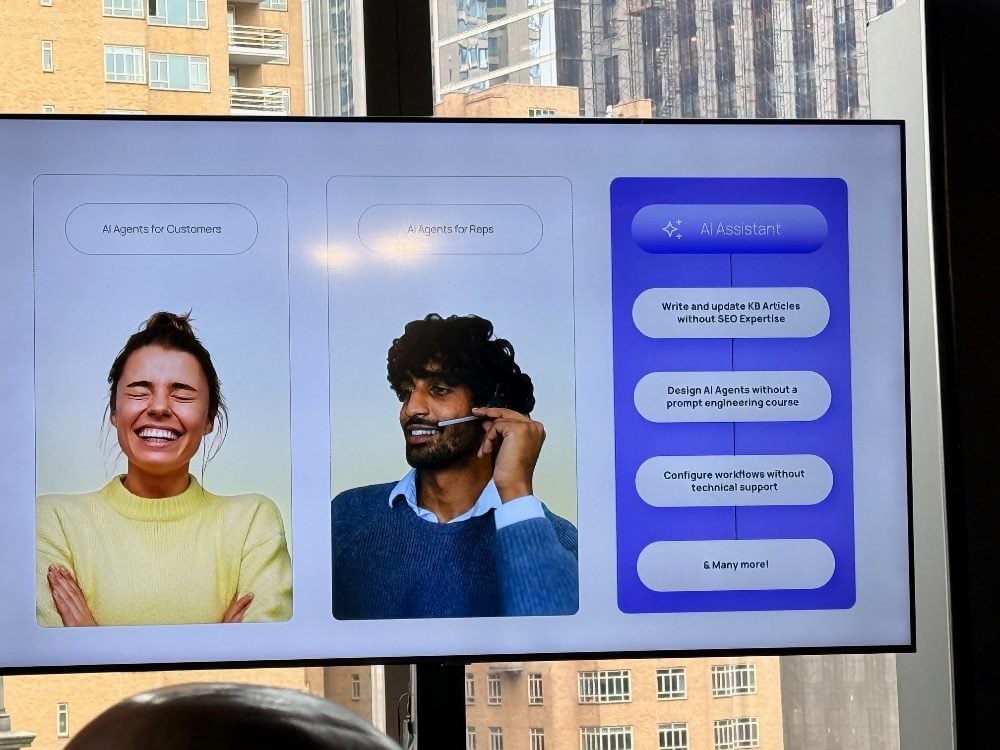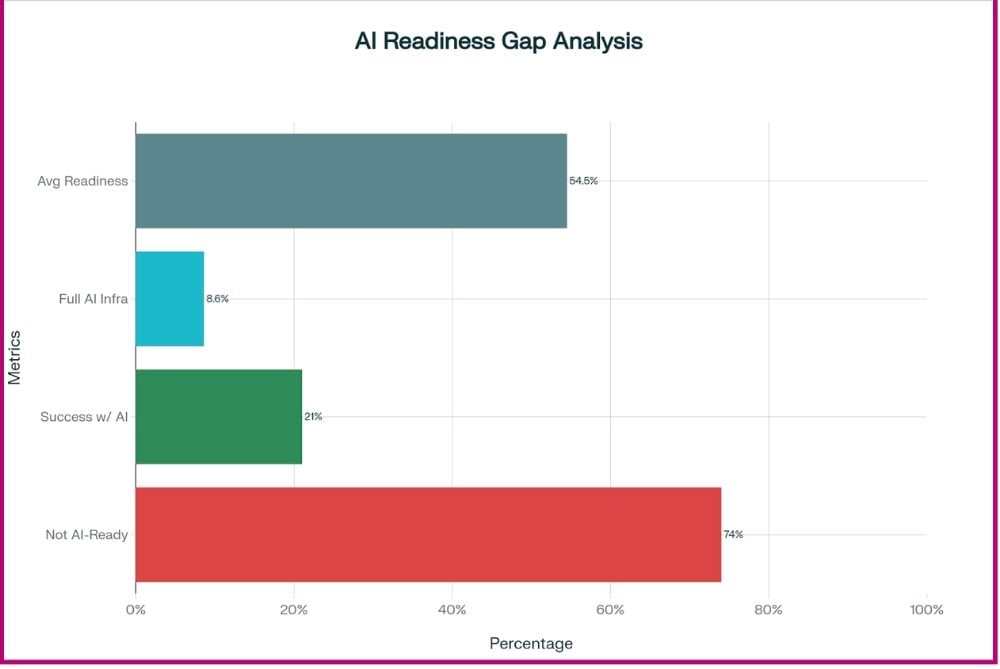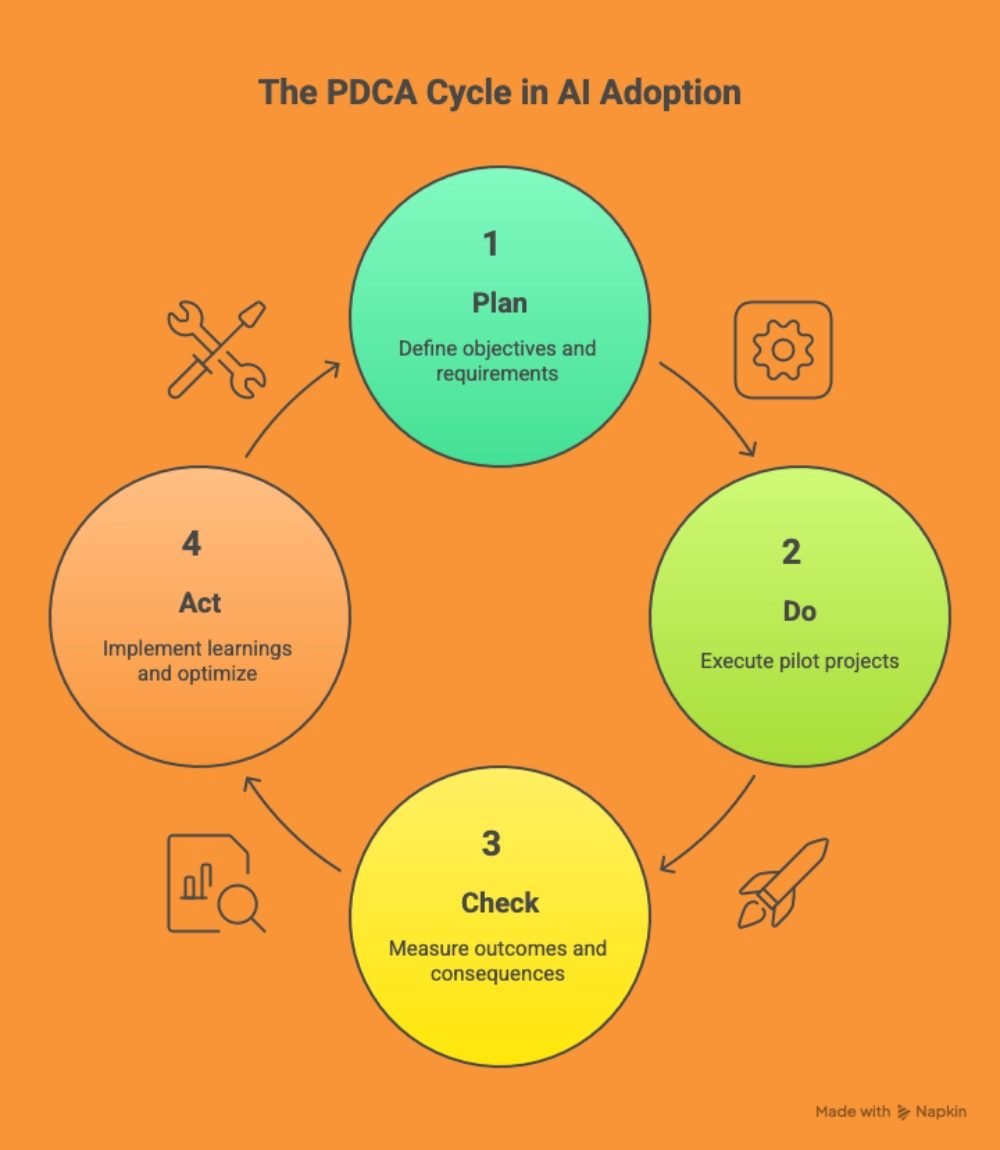The Gist
- AI-native CX revealed. Kustomer’s CX Now conference positioned the company at the forefront of AI-driven customer experience, shifting from automation add-on to intelligence-first foundation.
- Unified intelligence in action. The platform’s architecture merges data, context and computation to deliver faster, more precise, and more empathetic customer interactions.
- Technology outpacing readiness. The event was an opportunity to discuss a growing divide between innovation and execution — and how organizations need to have data discipline, governance and operational maturity to leverage AI responsibly.
NEW YORK CITY — Kustomer was founded in 2015 by Brad Birnbaum and Jeremy Suriel, both veterans of Assistly, which became Desk.com after its acquisition by Salesforce. From the start, their mission was to reimagine customer service around the individual, not the ticket. The platform consolidated conversations, orders and interactions into a single, chronological timeline that gave agents full visibility into the customer journey.
That decision to organize around people rather than cases marked a clear break from traditional customer service systems, which focused on queue management and volume metrics. Kustomer’s approach emphasized empathy and context, allowing agents to see not just what customers needed, but why.
Over time, the platform expanded from a unified service hub into a fully integrated customer experience system, adding omnichannel routing, automation and reporting. When Meta acquired Kustomer in 2020, it validated the company’s approach to human-centered service. After regaining independence in 2023, Kustomer doubled down on that foundation, this time embedding intelligence directly into the platform.
From People-Centered Design to Intelligence-Driven CX
The result is an AI-native CX environment: a system where intelligence is not layered on top, but woven into every workflow. Instead of connecting point solutions for search, analytics and automation, Kustomer unifies them. The company’s latest funding round of $30 million further accelerates that roadmap, positioning Kustomer to compete not as a ticketing platform but as an intelligence layer for enterprise customer operations.
This context made CX Now, held Tuesday, Oct. 14 at the Ascent Lounge, more than a product showcase—it was a statement about where the company believes customer experience is headed, and how it plans to get there.
Table of Contents
- FAQ on AI Readiness
- A Front-Row Seat to the Future of CX
- The Next Evolution of AI-Native CX
- A Brief History of Unification
- The Operational Reality Check
- Enterprise AI Readiness Gap: Most Companies Unprepared for AI Implementation
- The PDCA Imperative: Turning Implementation into Iteration
- The Customer Data Divide
- When Complexity Outpaces Capacity
- A Recurring Question Worth Asking
- The Path Forward for Responsible AI Adoption
FAQ on AI Readiness
This article examines AI readiness for enterprises in light of Kustomer's AI-native CX innovation. Click on the drop-downs to get answers on some foundational questions in this arena:
Plan objectives, data needs, and success metrics; Do limited pilots and validate integrations; Check results and unintended consequences (latency, data leakage, customer friction, agent fatigue); Act to operationalize improvements and start the next cycle.
A cross-functional team (data/architecture, CX ops, engineering, compliance) running a PDCA cadence: plan the use case, pilot in controlled scope, check outcomes and side effects, then act by baking learnings into workflows.
Clean, unified, governed data; working identity resolution; disciplined integrations; and clear ownership. Without these, AI amplifies existing fragmentation instead of fixing it.
Business/ops outcomes (first-contact resolution, time-to-resolution, churn reduction) plus control metrics (model override rate, errors/rollbacks, handoff drop-offs, data quality KPIs). Gains across both signal real readiness—not just a good demo.
Because the blockers are fundamentals—dirty or siloed data, weak governance, and under-resourced operations—not model capability. The gap is organizational readiness, not algorithms.
A Front-Row Seat to the Future of CX
I attended CX Now in New York, Kustomer’s executive conference focused on redefining customer experience through embedded intelligence. The event combined product reveals, live demonstrations and customer panels, all anchored by a single message: AI is no longer an enhancement. It is the foundation of customer engagement.
The sessions were well-produced and purposeful. Kustomer’s leadership positioned the platform not as another tool in the CX ecosystem, but as a unified environment where automation, data and human judgment work together in real time. The user interface reflected that philosophy: clean, intuitive, and free of the clutter typical of enterprise systems. Having worked across dozens of platforms, I was struck by how effortless it felt to navigate. Many systems are easy to use but deliver little functional depth. Kustomer achieves simplicity that does not compromise power.
AI as the Foundation of Customer Engagement
The live demo made that philosophy tangible. AI agents built workflows from natural-language prompts. Search surfaced insights instantly, transforming conversations into contextual data. Agents collaborated with AI in seamless transitions, maintaining control without losing speed. As one Kustomer team member said, “You need to know when to train AI, when to trust it, and when to override.” That balance was evident in every interaction.
It was also encouraging to hear a consistent theme from the product and solution teams. Jillian Zatta, lead solutions consultant at Kustomer, who led the demo, put it best: “Putting humans at the center of experiences is never going to change.” That focus on empathy and control distinguished Kustomer’s vision from the automation-first narratives common elsewhere in the industry.
The promise was clear: a platform that unifies intelligence, empowers people and simplifies complexity. For a moment, the usual practical questions about readiness, integration and data quality seemed distant, until the COO, Douglas Hanna, reminded the audience that “the only blocker is readiness.”
During one of the executive sessions, Kustomer’s COO made that statement, which underscored much of what I already believed. While the comment was candid, the topic received little elaboration, serving as a reminder that readiness remains the quiet variable in every digital transformation conversation.
Related Article: Kustomer Unveils AI-Native CX Platform With Embedded Intelligence
The Next Evolution of AI-Native CX
Kustomer’s platform evolution has been steady and deliberate. When it launched, its mission was simple: to give agents a single view of the customer. That decision to organize around the person rather than the ticket was a radical shift in an industry still obsessed with queue efficiency.
Over the past decade, Kustomer expanded that foundation to include automation and analytics, but the introduction of embedded AI represents a true inflection point. The company now speaks of unified intelligence: context and computation operating as one system.
Unifying Context, Computation and Human Insight
Industry-wide, most CX leaders still struggle to operationalize AI at scale. Nearly every enterprise has piloted automation, yet fewer than one in five has successfully embedded AI into daily workflows. That context underscores why Kustomer’s evolution matters. Its unified data foundation does not just make AI possible; it makes it practical. By centralizing every conversation, order and outcome, Kustomer eliminates the fragmentation that derails 95% of AI pilot programs and converts theory into measurable performance.
Four assistants anchor the new model:
- AI Agent Team Assistant, which designs modular AI “teams” to manage cases across compliance, refunds and escalations.
- AI Knowledge Assistant, which transforms static help centers into living, self-correcting knowledge bases.
- AI Workflow Assistant, which builds and tests automations from plain-language prompts.
- AI Search Assistant, which replaces dashboards with conversational analytics.
A fifth capability, unveiled briefly but significant in its implications, was the Knowledge Base AI Assistant. This feature addresses one of the most persistent gaps in customer experience operations: the dependency on customers to know what question to ask. Traditional knowledge bases require structured input; AI overcomes that limitation by interpreting intent and context. Kustomer’s forthcoming assistant will help organizations build and maintain these knowledge sources so that machine learning has the content it needs to respond intelligently.
Each assistant represents a layer of operational memory, absorbing what once required manual configuration and constant review. The cumulative effect is a platform that does not merely accelerate service but learns from it.
Kustomer’s leadership called this the fulfillment of its original vision. If the company’s first decade unified customer data, this next chapter unifies action.

Related Article: The Hidden Cost of Disconnected Customer Data — and How Journey Intelligence Fixes It
A Brief History of Unification
Kustomer’s story is one of persistence in a market crowded by ticketing systems. The company built its reputation on empathy through data visibility. Agents no longer had to guess who a customer was or what they purchased. Every interaction appeared on a chronological timeline, turning fragmented context into a continuous narrative.
Empathy Through Data Visibility
That model resonated with brands managing thousands of daily conversations. The approach did not scale easily; it required investment in data architecture and governance, but for those that made it work, results were dramatic. Faster resolutions, fewer escalations and higher retention followed.
The move toward AI-native capability is not a departure from that heritage; it is an amplification of it. The intelligence now resides inside the workflow, not above it. AI is no longer an add-on feature; it is the operational engine.
The model delivers measurable returns when executed properly. Companies adopting unified service architectures see measurable performance gains. Samsung achieved a 30% increase in agent efficiency and 97% customer satisfaction after implementing unified systems. These platforms eliminate context-switching friction (89% of customers report frustration when forced to repeat information across channels), raising satisfaction to 67% compared to 28% in disconnected environments.
Unified AI agents make employees 72% more likely to feel highly productive, while omnichannel solutions can reduce operational costs by up to 30%. The need is clear: 73% of consumers use multiple channels per interaction, yet only 13% of businesses maintain consistent context across them.
Kustomer’s advantage lies in its ability to sustain those outcomes through continuous learning: its AI modules adapt in real time, refining workflows based on live conversation data rather than static rules.
The Operational Reality Check
As impressive as CX Now was, I left thinking about readiness. The demonstrations were breathtaking, yet every feature was built on the premise of an organization already fluent in its own data.

Editor's note: In the image above, 54.5% “Avg Readiness” comes from data.world’s report The Enterprise Guide to AI Readiness; 8.6% “Full AI Infra” is from Huble’s analysis, AI Readiness Gap. 21% “Success w/ AI” is from Qlik’s global survey press release, Only 21% Have Successfully Operationalized AI; 74% “Not AI-Ready” reflects BCG’s 2024 report, AI Adoption in 2024: 74% of Companies Struggle to Achieve and Scale Value.
Enterprise AI Readiness Gap: Most Companies Unprepared for AI Implementation
The readiness gap is staggering. Across industries, more than 80% of organizations suffer from disjointed, disconnected and ungoverned data. Three out of four executives describe their AI ambitions as high, yet fewer than one in 10 have the data infrastructure to support them. Most of the failure stems not from technology, but from neglected fundamentals: identity resolution, data hygiene and integration discipline. The result is a widening gap between AI intent and operational capacity.
CMSWire Findings on AI Readiness & Data Quality
What CMSWire reports say about data fragmentation, readiness and the integration gap.
| Report | Finding | Integration, Readiness Challenges |
|---|---|---|
| State of the Digital Customer Experience Report 2025 | Siloed systems and fragmented customer data are among the top DCX challenges, especially in larger enterprises. | Siloed systems, technology integration challenges and/or fragmented customer data” cited by 28% overall; rises to 37% at companies with 5,000+ employees. |
| State of the Digital Customer Experience Report 2025 | AI value depends heavily on data prep; a significant portion of AI implementation time is spent preparing data. | At least half of the time spent implementing AI might be dedicated to preparing organizational data to work with AI. |
| State of the CMO Report 2025 | Bad data slows AI adoption; data hygiene and strong pipelines are foundational for ROI. | Without clean, connected data, even the best AI strategies won’t get off the ground. |
| State of the CMO Report 2025 | Integration discipline matters: connecting tools into the stack and workflows is key to realizing AI’s potential. | Guidance emphasizes data quality, integration, and hygiene as first steps before scaling AI. |
| 2025 Customer Data Platform (CDP) Market Guide | Identity resolution is essential to eliminate inconsistencies and duplication across disconnected sources. | Pulling information from a large number of disconnected sources will invariably lead to inconsistencies, duplications and errors… a good CDP will include an identity resolution capability. |
| 2025 Customer Data Platform (CDP) Market Guide | Single source of truth reduces fragmentation; data integrity and quality are growing business drivers. | CDPs consolidate disparate customer data to provide a centralized, enterprise-wide customer profile for activation. |
| 2025 DXP Market Guide | Vendors add APIs/connectors to ease composability, but there’s still a gap between the implied ease and the real cost/effort of integration. | DXPs serve as a foundation to integrate with internal/external systems; success often hinges on mature implementation partners and heavy integration work. |
| 2025 DXP Market Guide | Portal-heritage DXPs tend to be strong on integration for transformation programs. | These systems enable reusable modules/services and are suited to long-term relationship management and post-sale experiences. |
Kustomer’s capabilities thrive on context. That context depends on integration, clean data and governance. Without those elements, the system cannot perform as intended. AI cannot correct structural neglect; it amplifies it.
This is not a criticism of Kustomer. Instead, it is an acknowledgment of reality. Implementing an AI-native platform requires more than enthusiasm and budget. It demands infrastructure maturity, disciplined data hygiene and cross-functional alignment that few companies have mastered.
The customer panels reinforced that reality. Of the three companies featured on stage at CX Now, Terra Kaffe, Allivet and Horatio, two were founded in 2018, which means they operate without legacy data debt or deeply entrenched processes. Their success with Kustomer is notable but not yet representative. Allivet, the only legacy company on stage, stood out for a reason: its success was built on cultural alignment. As John Navas, Allivet’s COO, said, “We realized we can’t have transactional conversations.” His team’s emphasis on empathy and shared vision proved that even with the best technology, human coordination remains the foundation.
Readiness, Sustainability and Durability as the Hidden Variables
I have raised this question before, and it remains central to how I view innovation: how will companies operationalize the technology they onboard? The challenge is not limited to culture or process; it is technical as well. These systems are demanding to configure, integrate and maintain. Their success depends on human expertise that can translate ambition into architecture, configuration into coordination. Technology is not the obstacle in isolation; it becomes one when the people and processes required to support it are under-resourced or misaligned.
The readiness problem is both technical and procedural. Even when the data is clean and the platform is strong, few companies have the internal mechanisms or the people to validate, refine and sustain what they implement. The Plan-Do-Check-Act cycle offers a structure for doing exactly that. It provides the discipline needed to transform one-time deployments into systems that improve continuously.
Related Article: Beyond the Mirage: A Data-Driven Blueprint to Tame Martech Complexity
The PDCA Imperative: Turning Implementation into Iteration
Implementation failure rates across large-scale AI and CRM initiatives range from 55-95%, with AI projects failing at nearly twice the rate of traditional IT initiatives. Research shows that 95% of generative AI pilots fail to deliver business outcomes, while CRM implementations face a 55% failure rate, often because organizations rush from concept to deployment without addressing fundamental data quality issues, establishing proper governance frameworks or creating defined feedback loops for iterative improvement.
Those loops, the ability to plan, test, measure and adjust, are precisely what PDCA institutionalizes. Without them, improvement is episodic. With them, performance becomes a system.
Building A Continuous Improvement Loop
The Plan-Do-Check-Act cycle remains one of the simplest yet most underused frameworks in technology operations. Developed in the manufacturing world, it outlines a continuous improvement loop: plan the initiative, execute it, measure the outcome and refine based on findings (optimize).
In the context of AI adoption, PDCA separates organizations that experiment from those that evolve.
-
Plan involves establishing the problem statement, data requirements and success metrics before a line of code or configuration is written.
-
Do is the controlled deployment: piloting limited use cases, validating hypotheses and refining integrations.
-
Check measures not just performance but unintended consequences: latency, data leakage, customer friction or employee fatigue.
-
Act embeds the learnings back into process and design, converting pilot success into scalable practice.
At CX Now, Kustomer demonstrated what “Act” looks like when the feedback loop is automated. AI workflows monitored outcomes in real time, proposing new rules without human intervention. It was PDCA at machine speed.
Most enterprises have never heard of PDCA, but the framework itself is not the issue. What they lack is the cross-functional coordination it embodies: the ability to plan, operationalize, optimize and sustain complex technology. That is what determines whether innovation endures or evaporates.

The Customer Data Divide
The most pressing barrier to AI readiness is not fear or ethics; it is data quality. Across industries, organizations continue to operate with disjointed, disconnected and dirty data. Studies consistently show that the majority of AI projects fail before reaching production because the underlying information cannot support automation.
Clean Data as the Foundation of AI Success
Executives often declare confidence in their AI strategies, yet very few possess unified data structures or enforce governance consistently. Most operate on hundreds of uncoordinated data sources, each formatted differently, each telling a partial story. The cost of this fragmentation extends beyond technology budgets. It erodes employee trust, inflates service times and confuses the very customers these systems aim to serve.
Data quality failures are not minor inefficiencies: they are structural liabilities. The average organization loses between $12 and $15 million each year due to incomplete, inaccurate or duplicated data. The cost of becoming AI-ready is high but measurable: enterprise integrations typically require six to 12 months and between half a million and $2 million in infrastructure, migration and governance investment.
That is not to imply such amounts are relevant to Kustomer. This is just an industry range concerning onboarding AI. Yet the cost of inaction is higher. Every disconnected system compounds customer friction and inflates the expense of every subsequent technology initiative.
AI-Ready? Become Data-Disciplined First
At CX Now, the contrast was stark. Kustomer’s platform performed flawlessly because its environment was pristine: clean data, unified context and clear governance. In the real world, most companies lack those conditions. The issue is not aspiration but preparation. Before an organization can claim to be AI-driven, it must first be data-disciplined.
Jillian Zatta’s demonstration made this tangible. She showed how human agents and AI collaborate within Kustomer’s ecosystem: AI providing speed, humans providing judgment. She framed it simply: “Putting humans at the center of experiences is never going to change.” Her demo also highlighted the dependency on integrated data. When the AI issued a discount code, it required a third-party platform to generate it. This was a seamless process in the demo, but it raised a critical question: who set that integration up? That single question defines the difference between aspiration and readiness.
Data discipline requires governance, cleansing and maintenance that rarely appear on executive dashboards. Yet they determine whether investments in AI yield value or chaos. Without them, even the most advanced platform becomes an expensive mirror reflecting the organization’s internal disorder.
When Complexity Outpaces Capacity
Implementing Kustomer is not a plug-and-play event. It involves integration engineering, data migration, configuration and sustained operational support. The onboarding documentation reveals a timeline that can span several months, requiring dedicated project management, system administration and subject-matter expertise.
The Human Bandwidth Challenge
These are not trivial roles. Each carries accountability for data mapping, workflow testing and change management. Enterprises can absorb those responsibilities, but many mid-market organizations cannot. Even within large companies, departments often underestimate the human bandwidth required to maintain a high-velocity platform.
Complexity is not inherently negative; it is the price of precision. But without realistic plans and disciplined oversight, the same complexity becomes a risk factor. Every automation added without governance increases the likelihood of compounding errors. Every unvalidated data feed weakens the reliability of AI outputs.
Kustomer’s success stories showcase what is possible when these challenges are addressed directly. The failures that will inevitably emerge elsewhere will stem from ignoring them.
Related Article: AI at the Crossroads: Creativity, Ethics and Integration Challenges
A Recurring Question Worth Asking
Every new platform announcement reignites the same question: not whether the technology works, but whether organizations can. The issue is not lack of vision; it is lack of operational design. Without coordinated ownership of data, integration and human process, even the most advanced CX systems become isolated experiments rather than institutional progress.
Innovation Outpacing Adoption
Readers of my previous work will recognize this as a recurring question, and intentionally so. It is not skepticism for its own sake; it is a diagnostic lens. Innovation outpaces adoption not because leaders lack imagination, but because they underestimate the operational transformation required to sustain it. CX Now reinforced that pattern. The technology impressed me. The question that followed impressed me more: how will this be sustained once the spotlight fades?
Even after seeing it live, my perspective holds. Kustomer’s technology is extraordinary, but the true determinant of value remains the organization’s capacity to operationalize it. The conference reaffirmed my conviction: the future of AI-native CX will be shaped less by innovation velocity and more by the human systems capable of supporting it.
Every organization claims to want AI. Few are willing to rebuild their infrastructure, optimize technology around existing team strengths and re-examine their workflows to make it possible. Until that changes, the distance between ambition and execution will remain the defining measurement of digital maturity.
The Path Forward for Responsible AI Adoption
The lessons from CX Now extend beyond any single platform. Kustomer exemplifies how far CX technology has advanced and how integrated intelligence can elevate human service. But it also highlights what must come next for enterprises everywhere: a disciplined approach to readiness.
Operational Readiness as Competitive Advantage
The path forward is simple in concept but demanding in practice. The conference proved that simplicity in design can coexist with sophistication in function. Yet simplicity on screen hides complexity behind it. Readiness still requires the unglamorous work of governance, integration and data stewardship. Audit data integrity across all customer systems. Invest in the human expertise required for continuous improvement. Define the feedback mechanisms, both technical and cultural, that keep AI processes aligned with business goals. With the right team, these challenges become manageable and measurable.
These are not one-time actions; they are operational habits. The organizations that master them will transform customer experience into a competitive advantage measured in customer trust, not just transactions.
Achieving readiness is challenging but quantifiable. Successful implementations share consistent traits: executive sponsorship, clean data pipelines and dedicated internal resources. When these are in place, organizations typically realize a 15 to 40% lift in agent productivity, measurable improvements in first-contact resolution rates, and 10 to 37% reductions in customer churn within the first year.
Kustomer’s unveiling at CX Now proved that the technology is ready. The harder truth is that most companies are not. Readiness is no longer about installing a platform; it is about building the capability to learn from it, continuously, responsibly and at scale.
Learn how you can join our contributor community.
